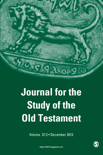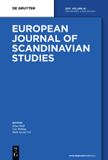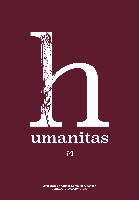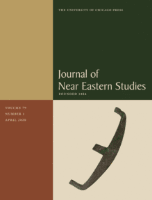
ZEITSCHRIFT DER DEUTSCHEN MORGENLANDISCHEN GESELLSCHAFT
Scope & Guideline
Exploring Cultural Intersections and Historical Narratives
Introduction
Aims and Scopes
- Linguistic Studies:
The journal publishes research on various languages, including Semitic, Indo-European, and Turkic languages, focusing on their structure, historical development, and comparative analysis. - Cultural and Religious Studies:
It explores the intersections of culture and religion, particularly in the context of Buddhism, Islam, and ancient religions, examining texts, practices, and historical developments. - Historical Analysis:
The journal features articles that analyze historical events, figures, and texts, providing insights into the political, social, and cultural dynamics of various Eastern societies. - Archaeological Research:
Contributions often include findings from archaeological sites, enhancing the understanding of historical contexts and material culture. - Interdisciplinary Approaches:
The journal encourages interdisciplinary research that combines linguistics, history, literature, and cultural studies to provide a holistic view of the subjects addressed.
Trending and Emerging
- Interdisciplinary Linguistic Research:
There is an increasing trend towards interdisciplinary studies that combine linguistics with cultural and historical analysis, reflecting a holistic approach to understanding languages in their social contexts. - Postcolonial Perspectives:
Emerging themes include postcolonial critiques of historical narratives and cultural representations, demonstrating a shift towards understanding the impact of colonialism on Eastern societies. - Digital Humanities in Oriental Studies:
The incorporation of digital tools and methodologies in research is gaining prominence, allowing for new ways to analyze texts and cultural artifacts. - Focus on Minority Languages and Cultures:
There is a growing attention to the languages and cultures of minority groups within larger societies, emphasizing the importance of diversity in the study of Eastern cultures. - Environmental and Ecological Studies:
Recent research is increasingly addressing the relationship between culture and environment, exploring how ecological factors influence historical and cultural developments.
Declining or Waning
- Classical Textual Studies:
There has been a reduction in articles focusing solely on classical texts without broader contextual analysis, indicating a shift towards more interdisciplinary approaches. - Comparative Religion Studies:
Research specifically comparing religious doctrines without substantial linguistic or cultural analysis has become less common, as scholars favor more integrated studies. - Focus on Ancient Near Eastern Languages:
While still a key area, there appears to be a diminishing number of papers exclusively dedicated to ancient Near Eastern languages, suggesting a broader linguistic focus in recent works. - Traditional Historical Narratives:
The journal has published fewer articles that adhere strictly to traditional historical narratives, leaning instead towards more innovative and critical perspectives. - Narrow Geographical Studies:
Research focusing on very specific regions or communities without connecting to broader themes or trends is less frequently seen, as the journal emphasizes wider contextual relevance.
Similar Journals

Journal for the Study of the Old Testament
Charting New Paths in Religious StudiesJournal for the Study of the Old Testament, published by SAGE PUBLICATIONS LTD, is a preeminent peer-reviewed journal dedicated to advancing the field of religious studies, particularly the scholarly investigation of the Old Testament. With its ISSN of 0309-0892 and E-ISSN 1476-6728, the journal has been a vital resource for researchers since its inception in 1976 and continues to deliver cutting-edge scholarship through 2024. Renowned for its rigorous academic standards, the journal has achieved a prestigious Q1 ranking in Religious Studies, positioning it among the top quartile of academic journals in this field. It holds a commendable 75th percentile ranking in the Scopus database, highlighting its impact and relevance in contemporary discourse. Addressed from its United Kingdom base at 1 Olivers Yard, 55 City Road, London EC1Y 1SP, the journal features a comprehensive exploration of theological themes, literary analyses, and historical contexts, aimed at researchers, professionals, and students alike. While access options may vary, the journal remains an indispensable platform for fostering scholarly dialogue and disseminating innovative ideas within the discipline.

European Journal of Scandinavian Studies
Advancing the frontiers of Scandinavian scholarship.European Journal of Scandinavian Studies is an esteemed journal published by Walter de Gruyter GmbH, dedicated to advancing scholarship in the fields of Cultural Studies, Linguistics and Language, and Literature and Literary Theory. Since its inception in 2010, the journal has been a pivotal platform for researchers and scholars, showcasing cutting-edge research and critical discussions pertaining to Scandinavian languages and cultures. With an ISSN of 2191-9399 and an E-ISSN of 2191-9402, the journal emphasizes accessibility to impactful academic work, despite its current non-open access model. While the journal is categorized within the Q4 quartile for Cultural Studies and Linguistics/Language, it has shown notable potential in ranking higher in its specialized domains, fostering a growing community of researchers invested in Scandinavian studies. The journal's office is located in Berlin, Germany, further enriching its European scholarly context. As it continues to evolve, the European Journal of Scandinavian Studies serves as a vital resource for academics seeking to engage deeply with the multifaceted aspects of Scandinavian culture and linguistics.

Humanitas-Portugal
Fostering Scholarly Dialogue Since 1947Humanitas-Portugal is a distinguished open access journal published by IMPRENSA UNIV COIMBRA that has been fostering scholarly dialogue since its inception in 1947. With an ISSN of 0871-1569 and E-ISSN 2183-1718, the journal serves as a platform for rigorous academic work in the fields of Archeology, Classics, History, Philosophy, and Religious Studies. Although positioned in the Q4 quartile by Scopus rankings, its commitment to accessibility and knowledge dissemination in Portugal highlights its significance to the academic community. Researchers and students can access articles openly, encouraging a broader engagement with various disciplines. With its convergence of studies from 2018 to 2024, Humanitas-Portugal continues to contribute to the understanding of human culture and thought, making it an essential resource for anyone invested in the humanities.

Monumenta Serica-Journal of Oriental Studies
Illuminating Cultural Complexities Through Scholarly DiscourseMonumenta Serica - Journal of Oriental Studies is a prestigious publication dedicated to advancing knowledge in the fields of cultural studies, history, literature and literary theory, philosophy, and religious studies. Published by Routledge Journals, Taylor & Francis Ltd, this journal boasts an impressive distribution since its inception in 1948, providing a rich repository of scholarly articles that explore the multifaceted dimensions of Oriental studies. Recognized in the Q1 and Q2 quartiles across various categories and exhibiting commendable rankings in Scopus for arts and humanities, the journal continues to serve as a critical platform for researchers, professionals, and students. While it is not open access, the journal maintains high standards of academic rigor and fosters intellectual discourse, ensuring its relevance and impact in an ever-evolving academic landscape. With contributions from leading experts, Monumenta Serica aims to bridge cultural complexities and enhance the understanding of Oriental studies through rigorous research and academic dialogue.

BULLETIN OF THE INSTITUTE OF HISTORY AND PHILOLOGY ACADEMIA SINICA
Exploring Interdisciplinary Insights in Humanities.BULLETIN OF THE INSTITUTE OF HISTORY AND PHILOLOGY ACADEMIA SINICA is a distinguished academic journal published by the Academia Sinica's Institute of History and Philology, based in Taiwan. Focused on the interdisciplinary fields of history, linguistics, archaeology, and religious studies, this journal provides a scholarly platform for researchers and professionals seeking to disseminate innovative findings and theoretical advancements. Despite its recent Q4 categorization in several areas including archaeology and linguistics, the journal is committed to fostering rigorous dialogue and enriching the academic community's understanding of historical and philological nuances. As an essential resource for those invested in the humanities, particularly within the context of Asian studies, it remains dedicated to enhancing visibility and accessibility to pivotal research. While currently not an open-access publication, it continues to shape the discourse within its field through concise contributions from credible scholars. Join the journal's ongoing mission to illuminate the complexities of history and language, bridging gaps across cultures and time.

JOURNAL OF NEAR EASTERN STUDIES
Fostering Interdisciplinary Insights into Near Eastern StudiesJournal of Near Eastern Studies (ISSN: 0022-2968; E-ISSN: 1545-6978), published by University of Chicago Press, stands as a cornerstone of academic discourse in the fields of Archaeology, Cultural Studies, and Linguistics and Language. With a prestigious track record that has evolved since its inception and spanning converged publication years from 1968 to 2024, this journal holds an impressive Q1 ranking in Cultural Studies and Linguistics and Language, and a solid Q2 ranking in Archaeology and Arts and Humanities as of 2023. Despite not offering open access, it is widely regarded for its rigorous peer-reviewed articles that contribute significantly to the understanding of Near Eastern history, culture, and languages. The journal's sustained recognition in Scopus rankings, including a notable 30th rank out of 173 in Arts and Humanities, ensures it remains an essential resource for researchers, academics, and students dedicated to exploring the rich tapestry of the Near East. With its base in Chicago, USA, the Journal of Near Eastern Studies continues to foster interdisciplinary collaboration and scholarly excellence.

Cartagine-Studi e Ricerche
Unveiling the past through innovative research.Cartagine-Studi e Ricerche is a distinguished academic journal published by UNIV STUDI CAGLIARI, dedicated to advancing the fields of Archaeology, Classics, and History. With an Open Access format since its inception in 2016, this journal ensures that scholarly research is freely available to a global audience, fostering knowledge dissemination and collaboration among researchers, professionals, and students. Based in Italy, it occupies a vital place in the academic community, holding a Q3 ranking in each of its categories for 2023, showcasing its relevance and impact in the disciplines it covers. Scopus rankings further validate its quality, with impressive percentiles reflecting its significant contributions to the landscape of arts and humanities. Spanning converged years from 2019 to 2024, Cartagine-Studi e Ricerche serves as a crucial resource for those engaged in the study of ancient cultures and historical contexts, inviting innovative research and critical discussions that shape our understanding of the past.

Collectanea Christiana Orientalia
Illuminating the Path of Christian Literary InquiryCollectanea Christiana Orientalia is a distinguished academic journal published by EDITORIAL UNIV CORDOBA-UCOPRESS, specializing in the fields of linguistics, literature, and literary theory. Since its inception, the journal has served as a vital platform for researchers and scholars from around the globe, promoting the exploration of Christian Oriental studies and their implications in contemporary literature and languages. Leveraging an Open Access model since 2013, it ensures widespread accessibility to cutting-edge research, fostering greater dissemination and engagement within the academic community. With an ISSN of 1697-2104 and an E-ISSN of 2386-7442, the journal is recognized for its rigorous peer-review process and has achieved commendable rankings in various categories: Q4 in Linguistics and Language and Q3 in Literature and Literary Theory as of 2023. This includes notable Scopus rankings that place it within the 57th percentile for Literature and Literary Theory, reflecting its significance and contribution to the field. Aspiring to foster dialogue and scholarship, Collectanea Christiana Orientalia invites contributions that delve into the intricacies of Christian thought, linguistics, and literary aesthetics, making it an essential resource for researchers, professionals, and students alike.

SVMMA-Revista de Cultures Medievals
Connecting Scholars Through the Lens of the Middle AgesSVMMA-Revista de Cultures Medievals is a pioneering open-access journal published by the Institut de Recerca i Cultures Medievals (IRCVM) at the University of Barcelona. Since its inception in 2013, this journal has dedicated itself to the exploration and dissemination of knowledge pertaining to medieval cultures across various disciplines, including archaeology, history, literature, philosophy, and the visual and performing arts. As an accessibility-driven journal, SVMMA ensures that its scholarly content is readily available to researchers, professionals, and students, promoting academic dialogue and interdisciplinary research. Despite its current Q4 rankings across diverse fields, SVMMA represents a valuable platform for emerging and established researchers alike, facilitating a deeper understanding of medieval studies and underscoring the journal's commitment to fostering innovative scholarship. Located in Barcelona, SVMMA continues to contribute significantly to the academic discourse while encouraging insightful perspectives on the rich tapestry of medieval cultures.

GERMANISCH-ROMANISCHE MONATSSCHRIFT
Connecting Cultures through Scholarly ExplorationGERMANISCH-ROMANISCHE MONATSSCHRIFT, published by UNIVERSITATSVERLAG C WINTER HEIDELBERG GMBH, is a vital academic journal dedicated to the fields of linguistics, literature, and literary theory. With its ISSN 0016-8904, this journal fosters scholarly discussions and disseminates innovative research that intersects Germanic and Romance languages and literatures. While it does not currently offer Open Access options, its contributions have positioned it within the Q4 quartile in both Linguistics and Language, and Literature and Literary Theory according to the 2023 category rankings. The journal's Scopus ranking reflects its emerging place within the academic community, situated at the 40th percentile for Literature and Literary Theory, and the 20th and 18th percentiles within Language and Linguistics, respectively. Scholars and students are encouraged to engage with this resource as it offers a platform for new perspectives that are pivotal to understanding the complex interrelations of these linguistic traditions, enriching both teaching and research initiatives.